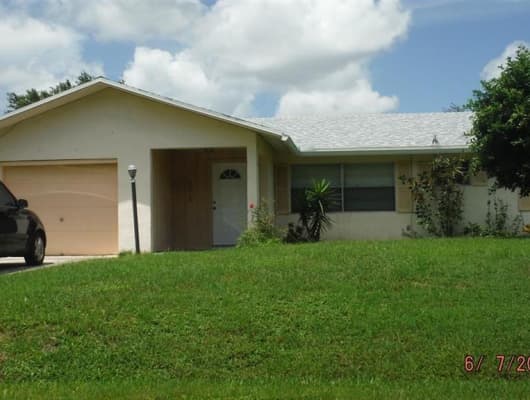The Fed’s Tough Stance: Why Rates Will Stay High for the Foreseeable Future April, 30th, 2024
As a real estate broker and homeowner here in Jupiter, FL, I’ve been closely following the Federal Reserve’s monetary policy decisions over the past year. And let me tell you, their latest announcement has left me and many others in the housing industry scratching our heads.
On May 1st, the Fed will conclude its latest policy meeting, and by all indications, they’re set to maintain their restrictive interest rate stance for the foreseeable future. Despite some progress on the inflation front, the central bank believes more work needs to be done before they can start easing up on the brakes.
Now, I get it – taming runaway inflation has to be their top priority. But the implications of this decision are going to be far-reaching, especially for those of us in the housing market. Let me break down what this means and why I’m concerned about the path ahead.
## Rates Aren’t Coming Down Anytime Soon
The key takeaway from the Fed’s recent messaging is that they’re prepared to keep interest rates elevated until they see clear, sustained progress on inflation. Gone are the market expectations of multiple rate cuts in 2024 – those have been steadily eroded over the past few months.
As a result, long-term rates like the 10-year Treasury yield have been creeping higher, now sitting above 4.6%. And that’s directly feeding into higher mortgage rates. Just last week, the average 30-year fixed rate crossed the 7% threshold for the first time since November.
Now, I know a lot of my fellow real estate investors and homebuyers were hoping for some relief on the rate front in the coming year. But based on the Fed’s stance, I just don’t see that happening anytime soon. In fact, I expect rates to remain in restrictive territory well into 2025, barring any major economic shocks.
## Inflation Remains Stubbornly High
So, what’s driving the Fed’s hawkish pivot? It really comes down to the lack of meaningful progress on the inflation front. Despite some moderation in certain areas, key price metrics like the core CPI have remained stubbornly elevated.
A big culprit has been the rise in service-sector costs, particularly for items like insurance, which saw an 11% jump in 2023. And of course, the persistent housing shortage has kept shelter prices elevated as well.
Now, the economy is still growing at a decent clip – GDP expanded 1.6% in Q1, which was a bit slower than expected but still solid overall. But that growth hasn’t been enough to significantly cool inflation pressures just yet.
## The Housing Market Faces Ongoing Challenges
As you can imagine, this environment of higher-for-longer rates is creating some real headwinds for the housing market. And as a real estate investor, I’m feeling the pinch.
On the new home sales side, builders have been trying to offset the affordability crunch by offering incentives like mortgage rate buydowns. And it’s worked to some degree – March saw an 8.8% jump in new home sales to a 693,000 annualized pace.
But existing home sales have been a different story. After hitting a 12-month high in February, sales declined 4.3% in March as the inventory shortage continued to constrain the market. Homes for sale made up just a 3.2-month supply, well below the 5-6 months considered balanced.
So, while builders are doing their best to get more supply out there, the lack of existing homes is still a major drag. And with rates staying elevated, affordability is going to remain a significant challenge for prospective buyers.
## What This Means for Real Estate Investors
As a real estate investor, I have to say – this environment has me feeling a bit uneasy. The combination of high rates, limited inventory, and ongoing affordability issues is creating a lot of uncertainty.
On the one hand, the new home sales data suggests there’s still decent demand out there, especially for buyers who can take advantage of builder incentives. And that could present some interesting investment opportunities, particularly in the build-to-rent space.
But on the flip side, the weakness in existing home sales is a real concern. If potential buyers continue to get priced out of the market, that’s going to put a damper on both rental demand and home price appreciation. And let’s not forget, higher rates also mean higher financing costs for investors like myself.
So, I’m definitely taking a more cautious approach these days. I’m being very selective about any new acquisitions, focusing on properties and markets that I believe can weather the storm. And I’m also keeping a close eye on my existing portfolio, making sure I’ve got the right mix of tenants and that my financing is optimized for the current rate environment.
## The Path Ahead Remains Uncertain
At the end of the day, the Fed’s decision to hold rates higher for longer is a double-edged sword. On one hand, it’s a necessary step to bring inflation under control and restore some stability to the economy. But on the other, it’s going to create a lot of pain and uncertainty for those of us in the housing industry.
As an investor and homeowner here in Jupiter, FL, I’m certainly feeling the impact. Higher rates are squeezing affordability, limiting demand, and putting a damper on price appreciation. And with the central bank seemingly unwilling to ease up anytime soon, I expect these challenges to persist well into the future.
Of course, I’m not giving up on real estate just yet. There are still opportunities out there, and I’m confident that the market will eventually find its footing. But in the meantime, it’s going to take a lot of careful planning, strategic thinking, and a healthy dose of patience to navigate these choppy waters.
Only time will tell how this all plays out. But one thing’s for sure – the Fed’s tough stance on rates is going to have a lasting impact on the housing market. And as someone with a vested interest in this space, I’ll be watching the situation closely in the months and years ahead.












No Comments